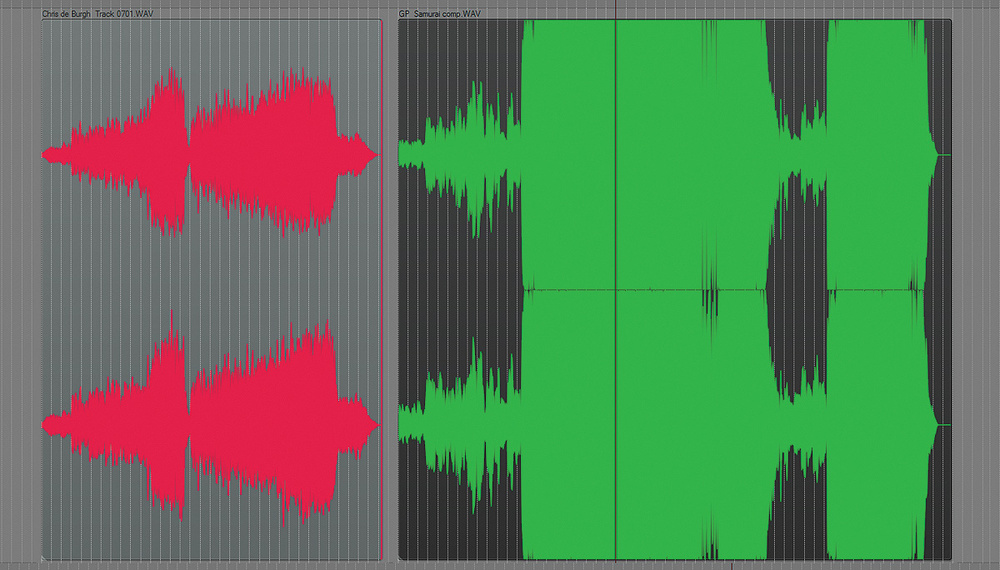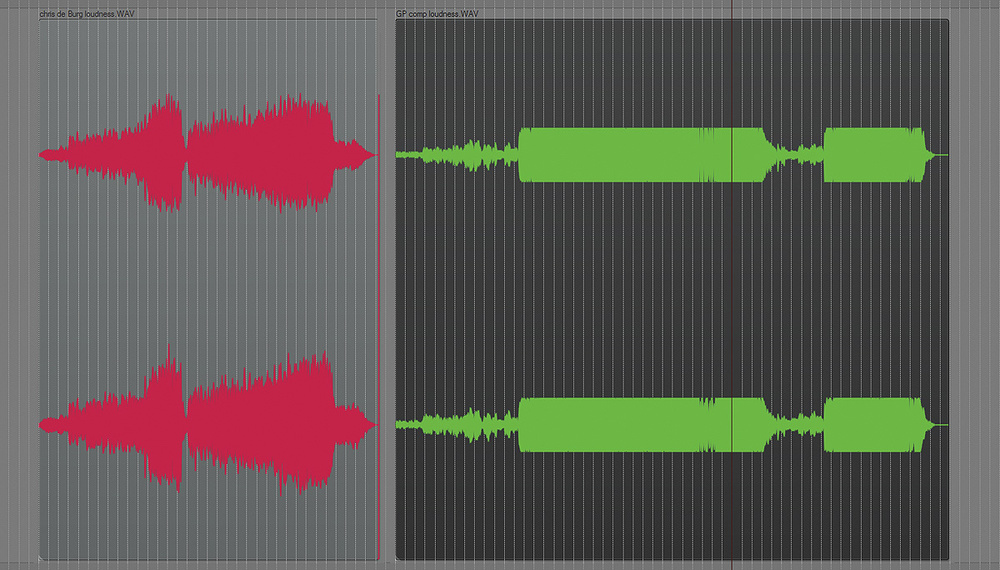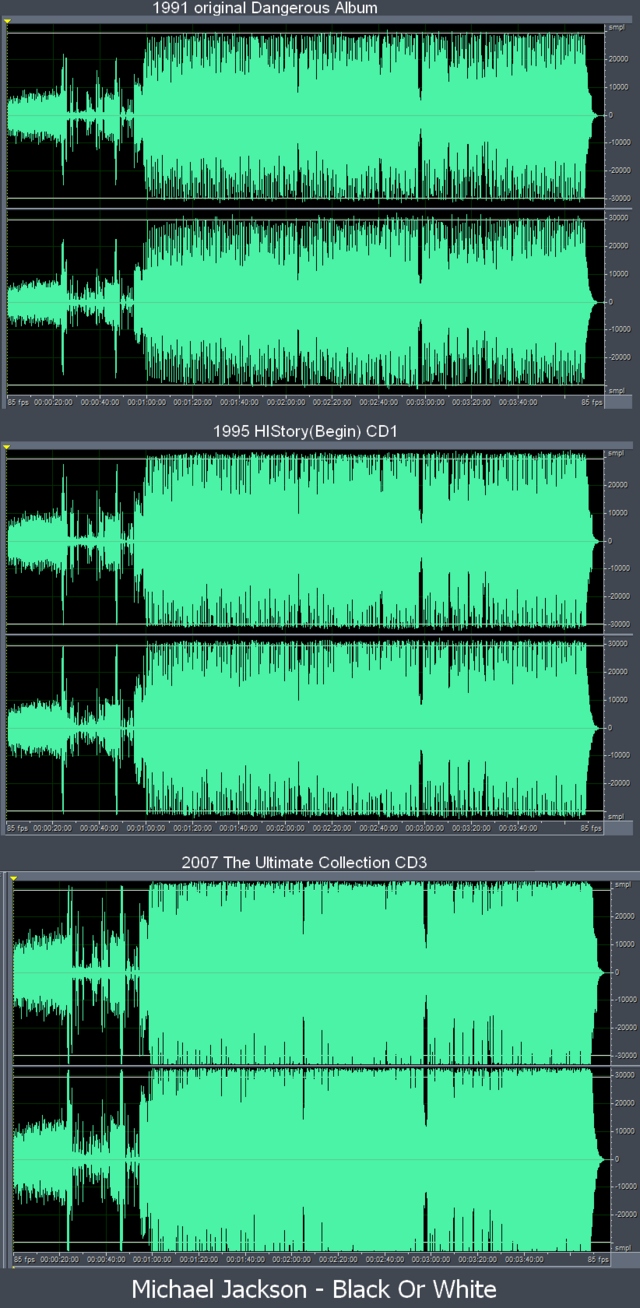Vasilisa
Symbolic Herald
- Joined
- Feb 2, 2010
- Messages
- 3,946
- Instinctual Variant
- so/sx
Someone was explaining the loudness war to me today, and I found it fascinating. Here is an article about the details of this sonic phenomenon and the new strides to change it. TIL

The End Of The Loudness War?
The New Normal
Hugh Robjohns
February 2014
Published in SOS | soundonsound.com
Excerpt:
As the nails are being hammered firmly into the coffin of competitive loudness processing, we consider the implications for those who make, mix and master music.
In a surprising announcement made at last Autumn's AES convention in New York, the well-known American mastering engineer Bob Katz declared in a press release that "The loudness wars are over.†That's quite a provocative statement — but while the reality is probably not quite as straightforward as Katz would have us believe (especially outside the USA), there are good grounds to think he may be proved right over the next few years. In essence, the idea is that if all music is played back at the same perceived volume, there's no longer an incentive for mix or mastering engineers to compete in these 'loudness wars'. Katz's declaration of victory is rooted in the recent adoption by the audio and broadcast industries of a new standard measure of loudness and, more recently still, the inclusion of automatic loudness-normalisation facilities in both broadcast and consumer playback systems.
In this article, I'll explain what the new standards entail, and explore what the practical implications of all this will be for the way artists, mixing and mastering engineers — from bedroom producers publishing their tracks online to full-time music-industry and broadcast professionals — create and shape music in the years to come. Some new technologies are involved and some new terminology too, so I'll also explore those elements, as well as suggesting ways of moving forward in the brave new world of loudness normalisation.
Anyone who has contemplated putting their own music onto a CD or online, even if only for family and friends, will be all too aware of the 'Loudness Wars'. This long-standing practice of competing to make one record sound loud in relation to others is usually claimed to be the consequence of an observation made in the 1950s that people tended to play the louder-cut records in jukeboxes more often. Thankfully, there's a physical limit to how loud a vinyl record can be cut without making it unplayable, so even the loudest-cut records managed to retain quite reasonable dynamics. Unfortunately, digital recording removed such constraints — a CD, for example, is playable regardless of the amplitude of the encoded audio data — and that simple technical freedom facilitated the 'war' that has been raging with (arguably) ever more musically destructive power over the last 30 years.
The audible consequence has been that the 'volume' of pop, rock and other music recorded and released on commercial CDs has risen steadily since the late 1980s, with a corresponding reduction in dynamics and, in many cases, a trend towards a more aggressive and fatiguing sound character — all in an attempt to make each track as loud as or louder than the perceived competition. It's bewildering to think that the audio format that offered the greatest dynamic range potential ever made available to the consumer is now routinely used to store music deliberately processed with the least possible dynamic range in the history of recorded music!
If Bob Katz is proved right, this current fashion to 'hyper-compress' music may well be relaxed or even reversed in the months and years to come, and the application of compression and limiting will revert to being a purely artistic and musical decision, rather than being an essential process in making a competitive product.
The key to Katz's claim is an ongoing industry shift into a 'loudness normalisation realm', in which the replay level of individual tracks is adjusted automatically to ensure they all have the same overall perceived loudness. This already happens to some extent on commercial broadcast radio, for example, but the new technology makes it practical to employ it in Internet music-streaming services and, crucially, personal music players too. Within a loudness-normalisation environment, it becomes impossible to make any one track appear to sound louder, overall, than any other, so mastering to maximise loudness inherently becomes completely futile.
A second aspect to this paradigm shift is that the kind of hyper-compressed material which the loudness wars encourage ends up sounding very flat, lifeless and even boring when compared with tracks which retain some musical dynamics — and the loudness-normalisation world really encourages and accommodates the use of musical dynamics.
So, in loudness-normalised environments — which is likely to include the vast majority of music replay systems within the next year or two — the use of heavy compression and limiting to make tracks sound loud will no longer work. Each track is balanced automatically to have the same overall loudness as every other track, and hyper-compressed material actually ends up sounding flat, weak and uninteresting compared with more naturally dynamic material.
Katz argues that the universal adoption of the loudness-normalisation paradigm in the consumer market will inevitably create a strong disincentive for the use of hyper-compression, and instead encourage music creators to once again mix and master their music to retain musical dynamics and transients. If this proves to be the case then the loudness wars may indeed be over, at last... but it will be a while before the last skirmishes are fought!
The current trend is all about trying to make a CD or download sound as loud as possible compared with other commercial material. Yet listening loudness is easily determined by the user via the volume control — so this really is just about competitive loudness, which is largely destructive and damaging.
In the all-analogue days, mixing consoles, tape machines, vinyl discs and other consumer replay media all employed a nominal 'reference level' — essentially the average programme signal level. Above this reference level, an unmetered space called 'headroom' was able to accommodate musical peaks without clipping. This arrangement allowed different material to be recorded and played with similar average loudness levels, whilst retaining the ability to accommodate musical dynamics too.
With the move into digital audio, the converters in early CD mastering and playback systems weren't as good as they really should have been, and to maximise audio quality, the signal levels had to peak close to 0dBFS (ie. the maximum digital peak level). Consequently, the 'reference level' effectively became the clipping level, and the notion of headroom fell by the wayside, becoming this war's first casualty!
Music producers (in the broadest sense of the term) quickly realised that they could employ techniques to squeeze as much of the audio signal as possible up towards the digital system's maximum peak level, simply because the CD format didn't complain like vinyl cutters did — and now many people seem to think that this is the primary role of a mastering engineer! The typical way that a track is made to sound loud on a CD (or as a download) is by employing heavy limiting and compression, often combined with some spectral shaping, to increase the average energy level and minimise the crest factor, or peak-to-average ratio. These techniques work because the way we perceive loudness is essentially based on the average energy level of a track; the higher the average energy level, the louder the track will sound. The technical term is 'peak normalisation': raising the level of the signal so that its peaks hit a defined maximum level. The flip side of this coin is that we lose the headroom margin, so there is no longer any room for musical dynamics. We can't raise the peak level any further, only the average level through limiting. In extreme cases, the material will become hyper-compressed.
Hyper-compression isn't an intrinsically bad thing: it has its place, just like any other musical effect, and has become an integral part of the sound character of certain musical genres. That's fair enough, because it's used in a musically informed way. But where it's being used purely to try to make a track louder than the competition, it can be quite damaging, either in the strict technical sense (through clipping, pumping and other distortions), or by compromising the musicality to some degree. The extent of the damage can vary from barely noticeable to blatant, depending on the skill of the mastering engineer and the requirements of the client. But, as a general principle, moving away from this long-established but characteristically destructive peak-normalisation practice would be a good thing from many perspectives. That's certainly what the TV industry felt a few years ago — and that's where the origins of the loudness-normalisation technology came from.
....


< Read More with Graphics >
The End Of The Loudness War?
The New Normal
Hugh Robjohns
February 2014
Published in SOS | soundonsound.com
Excerpt:
As the nails are being hammered firmly into the coffin of competitive loudness processing, we consider the implications for those who make, mix and master music.
In a surprising announcement made at last Autumn's AES convention in New York, the well-known American mastering engineer Bob Katz declared in a press release that "The loudness wars are over.†That's quite a provocative statement — but while the reality is probably not quite as straightforward as Katz would have us believe (especially outside the USA), there are good grounds to think he may be proved right over the next few years. In essence, the idea is that if all music is played back at the same perceived volume, there's no longer an incentive for mix or mastering engineers to compete in these 'loudness wars'. Katz's declaration of victory is rooted in the recent adoption by the audio and broadcast industries of a new standard measure of loudness and, more recently still, the inclusion of automatic loudness-normalisation facilities in both broadcast and consumer playback systems.
In this article, I'll explain what the new standards entail, and explore what the practical implications of all this will be for the way artists, mixing and mastering engineers — from bedroom producers publishing their tracks online to full-time music-industry and broadcast professionals — create and shape music in the years to come. Some new technologies are involved and some new terminology too, so I'll also explore those elements, as well as suggesting ways of moving forward in the brave new world of loudness normalisation.
The Loudness Wars
Anyone who has contemplated putting their own music onto a CD or online, even if only for family and friends, will be all too aware of the 'Loudness Wars'. This long-standing practice of competing to make one record sound loud in relation to others is usually claimed to be the consequence of an observation made in the 1950s that people tended to play the louder-cut records in jukeboxes more often. Thankfully, there's a physical limit to how loud a vinyl record can be cut without making it unplayable, so even the loudest-cut records managed to retain quite reasonable dynamics. Unfortunately, digital recording removed such constraints — a CD, for example, is playable regardless of the amplitude of the encoded audio data — and that simple technical freedom facilitated the 'war' that has been raging with (arguably) ever more musically destructive power over the last 30 years.
The audible consequence has been that the 'volume' of pop, rock and other music recorded and released on commercial CDs has risen steadily since the late 1980s, with a corresponding reduction in dynamics and, in many cases, a trend towards a more aggressive and fatiguing sound character — all in an attempt to make each track as loud as or louder than the perceived competition. It's bewildering to think that the audio format that offered the greatest dynamic range potential ever made available to the consumer is now routinely used to store music deliberately processed with the least possible dynamic range in the history of recorded music!
If Bob Katz is proved right, this current fashion to 'hyper-compress' music may well be relaxed or even reversed in the months and years to come, and the application of compression and limiting will revert to being a purely artistic and musical decision, rather than being an essential process in making a competitive product.
The key to Katz's claim is an ongoing industry shift into a 'loudness normalisation realm', in which the replay level of individual tracks is adjusted automatically to ensure they all have the same overall perceived loudness. This already happens to some extent on commercial broadcast radio, for example, but the new technology makes it practical to employ it in Internet music-streaming services and, crucially, personal music players too. Within a loudness-normalisation environment, it becomes impossible to make any one track appear to sound louder, overall, than any other, so mastering to maximise loudness inherently becomes completely futile.
A second aspect to this paradigm shift is that the kind of hyper-compressed material which the loudness wars encourage ends up sounding very flat, lifeless and even boring when compared with tracks which retain some musical dynamics — and the loudness-normalisation world really encourages and accommodates the use of musical dynamics.
So, in loudness-normalised environments — which is likely to include the vast majority of music replay systems within the next year or two — the use of heavy compression and limiting to make tracks sound loud will no longer work. Each track is balanced automatically to have the same overall loudness as every other track, and hyper-compressed material actually ends up sounding flat, weak and uninteresting compared with more naturally dynamic material.
Katz argues that the universal adoption of the loudness-normalisation paradigm in the consumer market will inevitably create a strong disincentive for the use of hyper-compression, and instead encourage music creators to once again mix and master their music to retain musical dynamics and transients. If this proves to be the case then the loudness wars may indeed be over, at last... but it will be a while before the last skirmishes are fought!
The Way Things Are
The current trend is all about trying to make a CD or download sound as loud as possible compared with other commercial material. Yet listening loudness is easily determined by the user via the volume control — so this really is just about competitive loudness, which is largely destructive and damaging.
In the all-analogue days, mixing consoles, tape machines, vinyl discs and other consumer replay media all employed a nominal 'reference level' — essentially the average programme signal level. Above this reference level, an unmetered space called 'headroom' was able to accommodate musical peaks without clipping. This arrangement allowed different material to be recorded and played with similar average loudness levels, whilst retaining the ability to accommodate musical dynamics too.
With the move into digital audio, the converters in early CD mastering and playback systems weren't as good as they really should have been, and to maximise audio quality, the signal levels had to peak close to 0dBFS (ie. the maximum digital peak level). Consequently, the 'reference level' effectively became the clipping level, and the notion of headroom fell by the wayside, becoming this war's first casualty!
Music producers (in the broadest sense of the term) quickly realised that they could employ techniques to squeeze as much of the audio signal as possible up towards the digital system's maximum peak level, simply because the CD format didn't complain like vinyl cutters did — and now many people seem to think that this is the primary role of a mastering engineer! The typical way that a track is made to sound loud on a CD (or as a download) is by employing heavy limiting and compression, often combined with some spectral shaping, to increase the average energy level and minimise the crest factor, or peak-to-average ratio. These techniques work because the way we perceive loudness is essentially based on the average energy level of a track; the higher the average energy level, the louder the track will sound. The technical term is 'peak normalisation': raising the level of the signal so that its peaks hit a defined maximum level. The flip side of this coin is that we lose the headroom margin, so there is no longer any room for musical dynamics. We can't raise the peak level any further, only the average level through limiting. In extreme cases, the material will become hyper-compressed.
Hyper-compression isn't an intrinsically bad thing: it has its place, just like any other musical effect, and has become an integral part of the sound character of certain musical genres. That's fair enough, because it's used in a musically informed way. But where it's being used purely to try to make a track louder than the competition, it can be quite damaging, either in the strict technical sense (through clipping, pumping and other distortions), or by compromising the musicality to some degree. The extent of the damage can vary from barely noticeable to blatant, depending on the skill of the mastering engineer and the requirements of the client. But, as a general principle, moving away from this long-established but characteristically destructive peak-normalisation practice would be a good thing from many perspectives. That's certainly what the TV industry felt a few years ago — and that's where the origins of the loudness-normalisation technology came from.
....
These two screen grabs show two different tracks side by side. As you can see from the top screen, where both tracks have been peak-normalised, the track on the right has been treated to significant loudness processing. The second screen shows the same two tracks matched for loudness as defined by the new standards — and the audible differences are as startling as the visual ones!


< Read More with Graphics >
Last edited:



